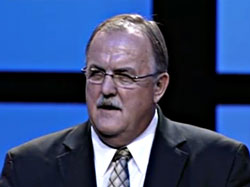Rainforest deforestation rates have reached new lows, which further challenges the theory of international land use change that has been used to penalize corn ethanol for its carbon footprint.
 Brazilian President Luiz Inacio Lula da Silva announced today that deforestation rates in the Brazilian Amazon declined 14 percent from August 2009 to July 2010, reaching the lowest rates ever recorded for the second consecutive year.
Brazilian President Luiz Inacio Lula da Silva announced today that deforestation rates in the Brazilian Amazon declined 14 percent from August 2009 to July 2010, reaching the lowest rates ever recorded for the second consecutive year.
Satellite images analyzed by Brazil’s National Institute for Space Research (INPE) show that an estimated 6,450 square kilometers of forests were cleared in the 12-month period, bringing rates to their lowest since monitoring started in 1988. The record-breaking decrease represents a major contribution to reducing Brazil’s greenhouse gas emissions, as global negotiations progress at the 16th Conference of the Parties to the United Nations Framework Convention on Climate Change (COP16), currently underway in Cancun, Mexico.
 In a post on the Renewable Fuels Association E-xchange blog, Vice President of Research and Analysis Geoff Cooper says this development is yet another blow to the already roundly rejected hypothesis of international land use change (ILUC) first proposed three years ago by Environmental Defense Fund attorney Timothy Searchinger.
In a post on the Renewable Fuels Association E-xchange blog, Vice President of Research and Analysis Geoff Cooper says this development is yet another blow to the already roundly rejected hypothesis of international land use change (ILUC) first proposed three years ago by Environmental Defense Fund attorney Timothy Searchinger.
“Today’s announcement by Lula is just the latest exhibit in a recent barrage of evidence that is undermining the argument that ILUC is a significant concern in the context of U.S. biofuels expansion,” writes Cooper, noting that annual U.S. ethanol production stood at 3.4 billion when deforestation peaked in 2004. “In 2010, the ethanol industry will produce nearly 13 billion gallons. So, Amazon deforestation has fallen 76% since 2004, while U.S. ethanol production has increased 279% in the same period.”
Cooper adds that he hopes the news out of Brazil will be greeted warmly by the environmental community, but he doubts it. “Unfortunately, I have a feeling the response from NRDC and others may go something like this: “Well, how much lower would deforestation have been without biofuels in the U.S.?” This response, of course, dodges the real issues at hand and resorts back to hypotheticals and computer models.”
 As a follow up to yesterday’s announcement about the NASCAR American Ethanol sponsorship here’s a photo of the show car that will be used for on-location promotional opportunities.
As a follow up to yesterday’s announcement about the NASCAR American Ethanol sponsorship here’s a photo of the show car that will be used for on-location promotional opportunities.  In this photo General Wesley K. Clark (Ret.) drops the American Ethanol green flag at the NASCAR Victory Lap on Las Vegas Boulevard. Clark was in Las Vegas for the announcement of the partnership.
In this photo General Wesley K. Clark (Ret.) drops the American Ethanol green flag at the NASCAR Victory Lap on Las Vegas Boulevard. Clark was in Las Vegas for the announcement of the partnership.







 Brazilian President Luiz Inacio Lula da Silva
Brazilian President Luiz Inacio Lula da Silva  In a
In a  While a group of
While a group of  “Allowing the provisions to expire or remain expired would threaten jobs, harm the environment, weaken our renewable fuel industries, and increase our dependence on foreign oil,” they wrote, asking that Congress act to “extend the biofuels tax and tariff policies for the longest term possible.”
“Allowing the provisions to expire or remain expired would threaten jobs, harm the environment, weaken our renewable fuel industries, and increase our dependence on foreign oil,” they wrote, asking that Congress act to “extend the biofuels tax and tariff policies for the longest term possible.”
 The Survey Monkey has spoken and the winner is …. drum roll, please….
The Survey Monkey has spoken and the winner is …. drum roll, please…. 
